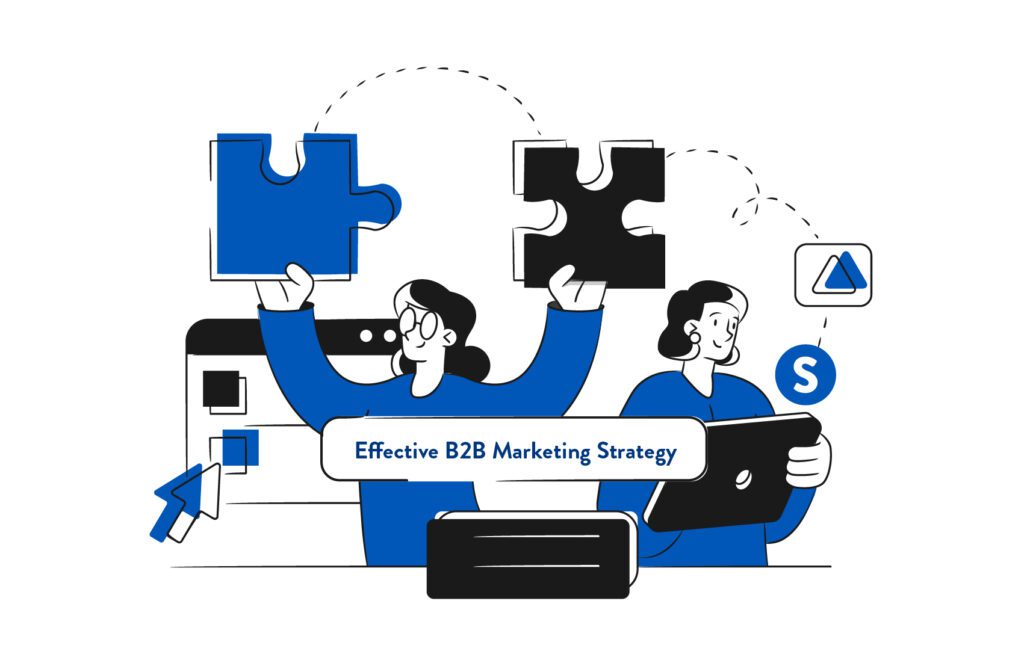
Creating an effective B2B advertising strategy is a complex task that requires a deep understanding of your target audience, a well-thought-out plan, and the right mix of tactics. Unlike B2C advertising, where the focus is often on emotional appeals and quick sales, B2B advertising requires a more nuanced approach that builds trust, educates, and nurtures long-term relationships. In this blog, we’ll explore the essential steps to developing a successful B2B advertising strategy that drives results.
Understand Your Target Audience
The foundation of any successful B2B advertising strategy is a thorough understanding of your target audience. In B2B, your audience is not just one individual but often a group of decision-makers, each with their own priorities and concerns. Start by identifying the key personas involved in the buying process. Consider their roles, challenges, and the specific benefits your product or service can offer to address their pain points.
Use data-driven insights to segment your audience effectively. This allows you to tailor your messaging and content to different stakeholders, ensuring that each one feels understood and valued. For example, while a CFO might be interested in cost savings and ROI, a project manager might focus on ease of implementation and support.
Set Clear Objectives and KPIs
Before diving into tactics, it’s essential to set clear objectives for your B2B advertising campaign. Are you looking to generate leads, increase brand awareness, or nurture existing relationships? Your goals will guide your strategy and determine the metrics you use to measure success.
Key performance indicators (KPIs) might include metrics like cost per lead (CPL), conversion rates, or the number of qualified leads generated. Setting specific, measurable goals allows you to track progress and make data-driven adjustments to your campaign.
Develop a Value-Driven Messaging Strategy
In B2B advertising, your messaging should be centered around the value your product or service brings to the business. Focus on how you can solve specific problems, improve efficiency, or deliver a strong return on investment. Your content should demonstrate your expertise and authority in the industry, providing potential customers with the confidence that your solution is the right choice.
Consistency is key. Ensure that your messaging aligns across all channels and touchpoints, from your website to your social media profiles and email campaigns. This unified approach helps reinforce your brand’s value proposition and builds trust with your audience.
Choose the Right Channels
B2B buyers often rely on specific channels to gather information and make purchasing decisions. Understanding where your target audience spends their time is crucial for effective B2B advertising. Common channels include:
- LinkedIn: The go-to platform for B2B marketing, LinkedIn allows you to target professionals based on job title, industry, and company size. Sponsored content, InMail, and display ads can be highly effective here.
- Industry Publications and Websites: Advertising in industry-specific publications or on websites that your target audience frequents can increase your visibility and credibility.
- Email Marketing: A tried-and-true channel for B2B, email allows you to nurture leads with personalized content and offers that drive them further down the sales funnel.
- Google Ads: Targeting specific keywords related to your industry ensures that your ads appear when potential customers are actively searching for solutions.
Leverage Content Marketing
Content marketing plays a critical role in B2B advertising by providing valuable information that helps potential customers make informed decisions. Invest in creating high-quality content that addresses the specific needs and challenges of your audience. This could include:
- Blog Posts: Thought leadership articles that showcase your expertise and offer solutions to common industry problems.
- Case Studies: Success stories that demonstrate how your product or service has helped other businesses achieve their goals.
Implement Targeted Advertising
Effective B2B advertising requires precise targeting to ensure that your message reaches the right audience. Use tools like LinkedIn’s targeting options or Google’s custom intent audiences to hone in on specific industries, job roles, or companies. This not only increases the relevance of your ads but also improves your ROI by reducing wasted spend.
Retargeting is another powerful tactic in B2B advertising. Given the longer sales cycles typical of B2B, retargeting ads can help keep your brand top-of-mind as potential customers move through the decision-making process.
Conclusion
Creating an effective B2B advertising strategy requires a deep understanding of your target audience, a clear set of objectives, and a well-rounded approach that includes value-driven messaging, targeted channels, and high-quality content. By following these steps and continuously refining your strategy based on data and feedback, you can build a successful B2B advertising campaign that drives meaningful results for your business.
To read more tips on B2B marketing strategies, check out our other B2B articles. If you’re interested in partnering with STORY to optimize your current marketing efforts, visit our website to learn more about our marketing services.